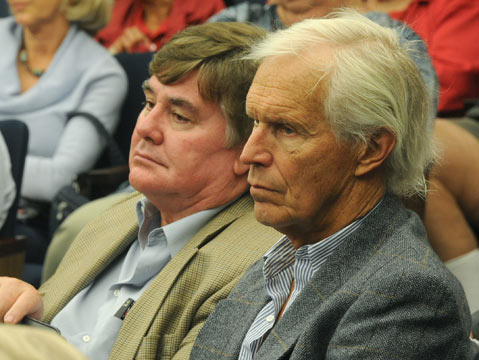The Great Gaviota Compromise
Management Plan Clears Hurdle, but More Work Remains

If a good compromise leaves everyone unhappy, Tuesday’s vote to move a massive Gaviota Coast management plan closer to reality was a true lesson in effective negotiation. The narrow 3-2 approval by the Board of Supervisors, which sends the document into environmental review before it can be formally adopted, came after nearly four years and 124 meetings of give-and-take by stakeholders in the pristine slice of Santa Barbara County coastline rich in farming, wildlife, history, mountains, and sea.
While virtually all of the hearing’s 25 public speakers expressed some dissatisfaction with the plan — voicing conflicting concerns about land use and zoning, habitat vulnerability, development options, and public access — many seemed to agree that the final product came acceptably close in achieving its overarching goal of preserving and promoting Gaviota’s agricultural heritage and rural beauty. And after much appreciation was expressed for the hard work that went into the government blueprint, Supervisor Doreen Farr, whose 3rd District includes the Gaviota Coast, called it “a beautiful document” that nevertheless needs a few changes before it can be finalized. (The current version can be read in its 189-page entirety at longrange.sbcountyplanning.org.)
Kim Kimbell, chair of the all-volunteer, 11-member Gaviota Coast Planning Advisory Committee (GavPAC), which formed in 2009 to spearhead the development of the new land-use guidelines, noted that although the public was involved extensively throughout the plan’s formation, GavPAC had no opportunity to weigh in on county staff’s changes before the document made its way to the Planning Commission. Recognizing that many of the changes were necessary to ensure the county-specific plan complied with state codes, Kimbell nevertheless lamented that shifts in “major policy issues” were not vetted by the full GavPAC contingent.
A major bone of contention is a GavPAC-created agriculture-incentive program that critics like committee member Guner Tautrim say was largely gutted from the draft plan by county staff. Other public speakers went as far as to call county planners “arrogant” and uneducated in their approach. As it stands, the only incentive item that remains would allow a landowner who occupies AGII-zoned property to build a second residential unit if the owner dedicates a trail easement, dedicates and/or constructs a public trailhead parking area, or dedicates a permanent agricultural, conservation, or scenic viewshed easement. In her motion before the board voted, Farr asked that the original list of incentives be considered during the forthcoming environmental study.
Tautrim, however, was supportive of the proposed Gaviota Agricultural Tiered Permit Structure, a revised, more flexible zoning scheme that would allow landowners “to attempt small-scale uses with a permit exemption or over-the-counter permit,” according to the draft plan, “in order to explore the long-term value of the use.” Paul Van Leer, chair of the county’s Agricultural Advisory Committee, who also holds a GavPAC seat, similarly supported the tier system and expounded on the benefits of farming and ranching, such as stewardship and preservation of wildlife habitat and how orchards and cover crops not only prevent erosion but also stop wildfires.
But Van Leer had his own list of concerns and recommendations, mainly that the plan not try and cap the size of structures deemed “principal dwellings” (the plan doesn’t currently limit square footage in any certain terms, instead employing existing county policies to preserve view corridors and stifle what one public commenter called the potential “McMansion-ization” of the rural area) and that trails slated for the area not interfere with ag work.
The trail element of the draft plan turned out to be one of the most divisive, with a host of private homeowners and large ranching operations worrying about public paths crossing through or near their land. One homeowner complained that a six-foot-wide trail snaking through Gaviota for miles would decimate acres of habitat and farmland and increase the risk of vandalism and fires. A Reagan Ranch representative admonished no trail should come near or on the historic property. And even a State Parks spokesperson said a large section the 12-mile route identified for the California Coastal Trail between Highway 101 and the beach is sited on a highly erosive bluff and that no feasibility study was completed to determine if the area could accommodate such a trail.
On the other side of the aisle, Otis Calef of the county’s Riding and Hiking Trails Advisory Committee said full discussion over informal public access to the area is lacking, and that the plan’s trail section should be amended to reflect the importance of such access. He also requested a concrete schedule for when and how the trails will be created. “We have all these lines on the map, but what do they mean?” he asked.
By the end, Farr said she appreciated that all diverging viewpoints could be aired, but she noted, “There has been so much work done on this already. … I feel that the issues that have been brought forward have already been discussed, so my tendency is to not want to make any wholesale changes at this time,” she said. “I want to be respectful of the process.” As with most planning issues, Farr went on, “Not everybody gets everything they want.”



